#CheapsideHoard
Text
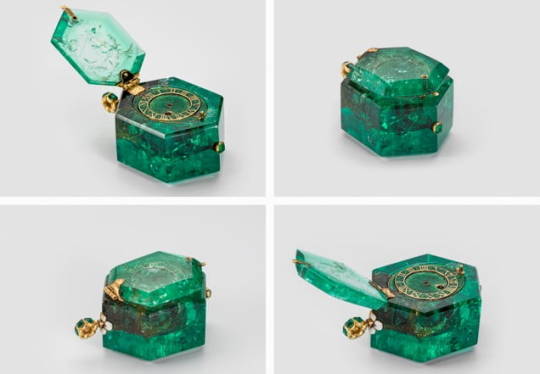
"Montre" en émeraude (circa 1600) du "Cheapside Hoard"découvert à Londres (1912) présentée par Dora Thornton - Goldsmiths London - lors des journées consacrées à “L'Ornement Précieux II” par L'Ecole des Arts Joailliers au Collège de France, janvier 2024.
#conferences#inspirations bijoux#emeraude#Thornton#EcoleVanCleef&Arpels#CollegeDeFrance#CheapsideHoard
18 notes
·
View notes
Photo

THE CHEAPSIDE HOARD http://bit.ly/2haP81n #CheapsideHoard #GemInstituteofAmerica #GIA #Hoptroff #HoptroffNo10 #Horology #London #MadeinUK #MuseumofLondon #PocketWatches #Ruffs #SignetRings #TheTweedPig #Watches @MuseumofLondon @MrMarkRuff @GIAnews @hoptroff @TheTweedPig @iWMagazine @WatchTime @museumoflondon @ruffs_signet_rings @richardhoptroff @giagrams @thetweedpig @iwmagazine @watchtimemagazine @watchtimemagazine @esquire @ukesquire @esquireru @esquirenl @esquiresg @esquire_la @gq @britishgq @gqrussia @gq_korea @gqmexico
#gia#horology#cheapsidehoard#museumoflondon#london#geminstituteofamerica#hoptroff#signetrings#watches#hoptroffno10#thetweedpig#ruffs#pocketwatches#madeinuk
0 notes
Photo

Getting the display ready for tomorrow's Arts and Sciences event! Brian is entering a suite of gemstones that's he's replicated from the Cheapside Hoard. #mysca #history #cheapsidehoard #garnet #custom #shiney #lapidary #artsandscience #aethelmearc #display #societyforcreativeanachronism #gems #research #neverstoplearning #gemstones via Instagram http://ift.tt/2pQkUUV
0 notes
Text
Leaving a Legacy in Style
1/7/2014
Location: Museum of London trip on 1/6/2014
The Museum of London now carries almost the entire family of jewels familiarly known as the Cheapside Hoard. As we were taken through the exhibit, magnifying glass in hand, we discovered how this hoard came to be. For those of you reading this who have not heard about the story, you can follow along.
The background of this discovery starts with workmen who were excavating a cellar near an area called Cheapside in London. They came upon a wooden box and when they opened it up jewels of all sorts were found. Many of which, we as a class, were able to examine firsthand. After finding the jewels and gems, they were quickly sold for money to some sort of antique or pawnshop jeweler, eventually making it to a museum. So, here we are today just over 100 years later looking at these beautiful pieces.
What intrigued me most out of this hoard, wasn't so much the story of how it was found or how it was made,rather, it was the symbolic meaning of the gemstones. This jewelry, most which was made from various gemstones, came from the 16th and 17th centuries.
In this exhibit we learned about the Great Fire of 1666 and how many other plagues or viruses may have affected the movement and meaning of these market items. Most of the gemstones held a value much greater than the beauty. Certain stones such as emeralds were worn by women to protect them from such calamity like the plague. After discovering that fact, I was drawn in to find the meaning of some others, and I wasn't disappointed.
In particular, I showed a liking for a gem that was light green in color and carved in the shape of a parrot which symbolized new love. The color white was a symbol of purity and amethyst was a symbol of sobriety or the sobering of violent passions and drunkenness. [All of which hold some connection to our college experiences.] Other interesting gems like bloodstone were carried with the belief that it cured blood disorders due to its dark stone with drops of blood red within it. This hoard was not just beautiful to the eye, it was also very important to the heart and soul of those who wore them, it wasn't hard to see that.
Experiencing these gems up close just inches away was a sight for sore eyes. Their colors and how they are still beautiful today is unbelievable. I enjoyed how art in this form really had a strong effect on people of the age and still does today. Gemstones hold a meaning close to many individuals, including myself. As the past continues to move farther away, the memories, artifacts and way of life continue to build and leave a legacy for all of us to enjoy (and look good wearing!).
-Lindsay Piraino, Eckerd College
#london#cheapsidehoard#Eckerd College#history#gemstones#jewels#collegestudent#adventure#explore#2014
0 notes
Text

“Ring" from the Cheapside Hoard (circa 1640) presented in “A History of Jewellery: Bedazzled (part 3: Baroque Splendour)” by Beatriz Chadour-Sampson - International Jewellery Historian and Author - for the V&A Academy online, February 2024.
#conferences#inspirations bijoux#diamant#email#CheapsideHoard#ChadourSampson#V&AAcademy#Victoria&AlbertMuseum
4 notes
·
View notes
Text


“Design for Jewellery" by Arnold Lulls (1585-1640) and "Emerald Grapevine" pendant from the Cheapside Hoard presented in “A History of Jewellery: Bedazzled (part 3: Baroque Splendour)” by Beatriz Chadour-Sampson - International Jewellery Historian and Author - for the V&A Academy online, February 2024.
#conferences#illustrations#inspirations bijoux#végétal#email#emeraude#Lulls#CheapsideHoard#ChadourSampson#V&AAcademy#Victoria&AlbertMuseum
0 notes
Photo

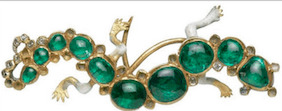
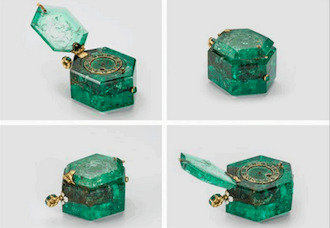
"Caravelle" (fin XVIe siècle), "Salamandre" et "Montre" du Trésor de Cheapside Hoard (début XVIIe siècle) en émeraudes présentés à la conférence “Parures de Ville et Parures de Cour à la Renaissance” par Julie Rohou - Conservateur du Patrimoine au Musée National de la Renaissance - Château d'Ecouen - pendant le cycle de cours d'été “De la Parure de Cour à la Joaillerie Parisienne : Une Histoire du Bijou” de l'Ecole du Louvre, juillet 2021.
9 notes
·
View notes
Photo


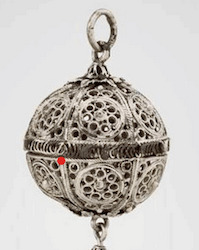
"Pomme de Senteur" (XVIe siècle), “Flacon de Parfum” en opales et émail du Trésor de Cheapside Hoard (début XVIIe siècle) et "Pomander (Trésor Maignan)" (circa 1550-60) présentés à la conférence "Parures de Ville et Parures de Cour à la Renaissance" par Julie Rohou - Conservateur du Patrimoine au Musée National de la Renaissance - Château d'Ecouen - pendant le cycle de cours d'été "De la Parure de Cour à la Joaillerie Parisienne : Une Histoire du Bijou" de l'Ecole du Louvre, juillet 2021.
6 notes
·
View notes
Photo
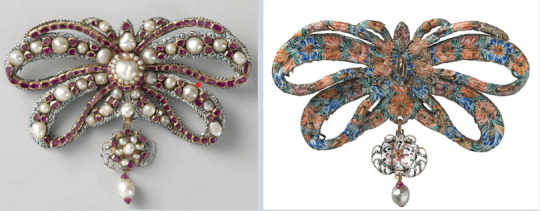


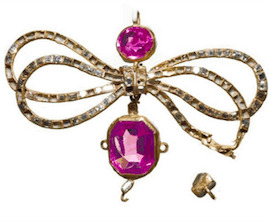



"Noeud" ou "Galant de Corsage" R°V° (circa 1650), "Dessins de Boucles à Girandole" et "Modèle pour les Deux Faces d'un Noeud de Joaillerie" de Gilles Légaré (circa 1663), "Pendant en Forme de Noeud" de Cheapside Hoard (début XVIIe siècle) et "Portrait de Dame" de Charles Beaubrun (circa 1600) présentés à la conférence “Le XVIIe Siècle à la Cour de France” par Julie Rohou - Conservateur du Patrimoine au Musée National de la Renaissance - Château d'Ecouen - pendant le cycle de cours d'été “De la Parure de Cour à la Joaillerie Parisienne : Une Histoire du Bijou” de l'Ecole du Louvre, juillet 2021.
#conferences#inspirations bijoux#email#perle#Rohou#EcoleLouvre#rubis#illustrations#Legare#peinture#style#dentelle#bijoux de tête#CheapsideHoard#Beaubrun
4 notes
·
View notes
Photo
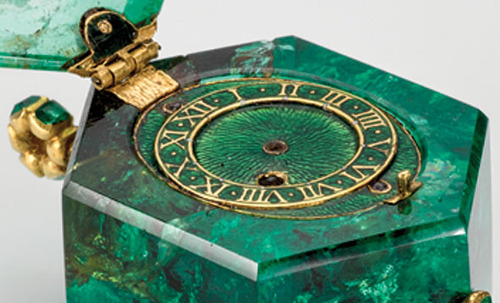
THE #CHEAPSIDEHOARD http://bit.ly/2haP81n @MuseumofLondon @MrMarkRuff @GIAnews @hoptroff @TheTweedPig
#Gem Institute of America#GIA#Hoptroff No 10#Watches#Horology#London#Made in UK#Pocket Watches#Ruffs#Signet Rings#Museum of London#The Tweed Pig
0 notes
Photo
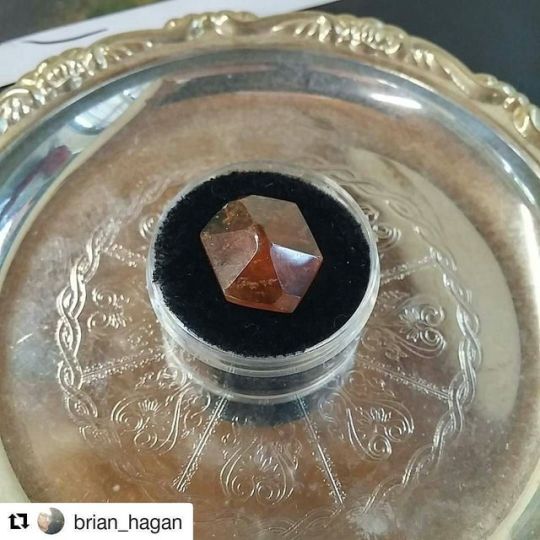
#Repost @brian_hagan with @repostapp ・・・ My entry for the Arts and Sciences competition at Blackstone Raids: a hessonite garnet copy of an almandine garnet in the Cheapside Hoard. #mysca #history #cheapsidehoard #garnet #custom #shiney #lapidary #blackstone #blackstoneraids #artsandsciences #renaissance #aandsdisplay #aethelmearc #æthelmearc via Instagram http://ift.tt/2pvCvmP
0 notes
Photo
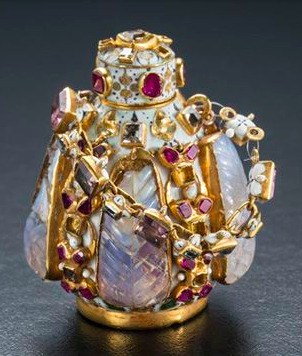
"Flacon de Parfum" en opales et émail du Trésor de Cheapside, London, début du XVIIe siècle, conservé à la Tour de Londres, Grande-Bretagne. Conférence “Surprenantes Opales” animée par Dominique Dufermont, gemmologue et géologue, et Gislain Aucremanne, historien de l'Art, à l'Ecole Van Cleef & Arpels, Paris, septembre 2015.
#Inspirations bijoux#conferences#email#CheapsideHoard#Dufermont#Aucremanne#EcoleVanCleef&Arpels#mineral#parfums
5 notes
·
View notes